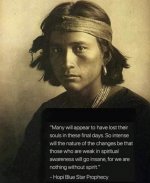You are using an out of date browser. It may not display this or other websites correctly.
You should upgrade or use an alternative browser.
You should upgrade or use an alternative browser.
There’s a few of these on the roof…
- Thread starter jackieguaccamo
- Start date
sixthswan
Non-Member
I remember that photo from the "Sacred Spirit" records.
So I've looked on the internet, not to seem clever - but because I'm interested.
"Navajo Boy" 1907 is the name of the photo. Sadly no actual name, but there are other fascinating Carl Moon photos that do name individuals.
So I've looked on the internet, not to seem clever - but because I'm interested.
"Navajo Boy" 1907 is the name of the photo. Sadly no actual name, but there are other fascinating Carl Moon photos that do name individuals.
jackieguaccamo
Flat Earther
Yes one of my favourite books when I was younger was Bury my heart at wounded knee, I think it was called. Can’t be arsed to Google it and look cleverer.
jackieguaccamo
Flat Earther
What’s happened to you, you’re biting too quickly. You used to be so cool..
jackieguaccamo
Flat Earther
You’re very serious nowadays. You ok hun?I didn't realise there was some sort of competition or battle going on?
jackieguaccamo
Flat Earther
Yeah me too
borebage53
Knife & Fork pending
John Ford invariably used Navajo Indians as the “extras” in a lot of his Western films. They were the closest tribe on “reservations” to where Ford liked to film especially to his favourite location Monument Valley.
To get some sort of “revenge” for being portrayed in the films as members of other tribes,either Apache,Comanche or Cheyenne,and whenever they were told to add “authenticity” by speaking in their own “tongue” then they would use obscene or comic dialogue unbeknown to the film makers. When played to a Navajo “audience” the films would cause uncontrollable laughter and mirth!
Navajo “code talkers” were used by the US Marines in the Pacific during WWII because their complex unwritten language was unbreakable by the Japanese!
To get some sort of “revenge” for being portrayed in the films as members of other tribes,either Apache,Comanche or Cheyenne,and whenever they were told to add “authenticity” by speaking in their own “tongue” then they would use obscene or comic dialogue unbeknown to the film makers. When played to a Navajo “audience” the films would cause uncontrollable laughter and mirth!
Navajo “code talkers” were used by the US Marines in the Pacific during WWII because their complex unwritten language was unbreakable by the Japanese!
borebage53
Knife & Fork pending
There are wonderfully humorous passages of narrative in Joseph Heller’s Catch 22 of the Native American character in the book of Chief White Halfoat. Whenever his tribe wanted to continue their nomadic existence on their traditional native lands in Oklahoma the oil companies would arrive to throw Halfoats people off the land and immediately strike oil. This carried on repeatedly until the day that the oil company got there first before Halfoat and his tribe could set up their teepees!
Muzzysmissingearring
Roofer
Wind talkers was the film made about them in the pacific war.John Ford invariably used Navajo Indians as the “extras” in a lot of his Western films. They were the closest tribe on “reservations” to where Ford liked to film especially to his favourite location Monument Valley.
To get some sort of “revenge” for being portrayed in the films as members of other tribes,either Apache,Comanche or Cheyenne,and whenever they were told to add “authenticity” by speaking in their own “tongue” then they would use obscene or comic dialogue unbeknown to the film makers. When played to a Navajo “audience” the films would cause uncontrollable laughter and mirth!
Navajo “code talkers” were used by the US Marines in the Pacific during WWII because their complex unwritten language was unbreakable by the Japanese!
borebage53
Knife & Fork pending
Written by Dee Brown. I still have my copy on my bookshelf. Another of his works is The Butternut Geurrillas an account of Griersons Raid of 1700 Union Cavalry through Mississippi in 1863 during the American Civil War!Yes one of my favourite books when I was younger was Bury my heart at wounded knee, I think it was called. Can’t be arsed to Google it and look cleverer.

